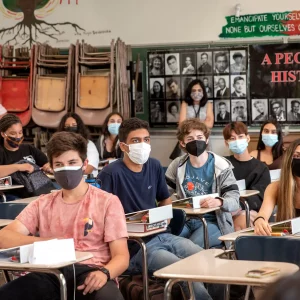Human trafficking is a dark shadow looming over California, silently ensnaring thousands each year. It’s a grim reality where people are coerced into forced labor or sexual exploitation, preying on the most vulnerable among us. But this isn’t just a statistic. It is a heartbreaking tale of exploitation that plays out in various forms across the state, from factories to brothels to homes. The victims? They could be anyone: women, children, immigrants, or those struggling with poverty or homelessness.
But why should we care? Human trafficking isn’t just a crime against individuals, it’s an assault on the very fabric of our society. It perpetuates cycles of exploitation and injustice, leaving scars that run deep. By confronting this head-on, we aren’t just protecting victims, we’re defending the principles of dignity and human rights upon which our society stands. Understanding the scope and severity of this problem is essential to effectively combating it. In California, human trafficking takes various forms, including forced labor, sexual exploitation, and domestic servitude. Addressing human trafficking is of critical importance due to its far-reaching consequences. By actively combating human trafficking, we reaffirm our commitment to upholding the fundamental principles of human rights and dignity. In doing so, we strive to create a world where all individuals are safeguarded from the horrors of exploitation and abuse and foster a more just and equitable society for present and future generations.
The prevalence of human trafficking in California can be traced to several contributing factors, including poverty, limited access to education, systemic disparities, and inadequate legal safeguards. These challenges create fertile ground for exploitation, especially among marginalized communities who are particularly vulnerable to trafficking. Traffickers capitalize on the lack of resources and support networks among individuals facing these obstacles, exploiting their vulnerabilities for personal gain. As a result, addressing human trafficking requires a holistic approach that addresses the root causes of vulnerability and implements measures to safeguard the rights and well-being of all Californians.
Marginalized communities bear a disproportionate burden of the root causes contributing to human trafficking. These factors increase their susceptibility to exploitation, exacerbating existing inequalities. Moreover, individuals experiencing homelessness are particularly vulnerable to human trafficking. These individuals often face intersecting forms of oppression, including economic hardship, discrimination, and lack of social support. Traffickers exploit these vulnerabilities, trapping victims in cycles of abuse and coercion.
Yet, amidst the darkness, there are voices of resilience and courage. Survivors and advocates from affected communities are pivotal in raising awareness and driving change. Through their stories, they bring humanity to the issue, shining a light on the harsh realities of trafficking and inspiring empathy and action from both individuals and policymakers. These narratives not only expose the hidden horrors of exploitation but also offer a glimmer of hope for a brighter future.
Take, for example, Ima Matul’s journey from Indonesia to California, where she tragically fell victim to modern-day slavery. Her story serves as a powerful reminder of the urgent need to address human trafficking and ensure that no one else suffers a similar fate. Through storytelling, we can illuminate the darkest corners of exploitation and pave the way for meaningful change.
Ima Matul’s story begins with a promise of a better life in the United States, a dream shattered upon her arrival in California. Instead of opportunity, she found herself in a living nightmare of exploitation and abuse, forced into domestic servitude and stripped of her basic human rights. This includes her captors forcing her to work several days without pay, while simultaneously making threats. One instance of this was when a salt shaker was thrown at her, leading her to being hospitalized. Yet, amid the darkness, Matul summoned the courage to break free from her captors, reclaiming her freedom and defying the chains of oppression that bound her.
That being said, in order to prevent stories like Matul’s story from occurring again as well as addressing human trafficking necessitates systemic changes in policies and practices. This involves tackling current barriers, such as gaps in victim services and ineffective law enforcement strategies, to prevent further harm to vulnerable individuals. By identifying and rectifying these shortcomings, we can create a more robust framework for combating trafficking and providing support to those affected by it.
This can look like increasing collaboration between government agencies, law enforcement, nonprofits, and community organizations is essential in effectively combating human trafficking at all levels. By working together, these entities can leverage their respective expertise and resources to implement comprehensive strategies that target the root causes of trafficking and disrupt its operations. Through coordinated efforts, we can enhance prevention efforts, improve victim identification and support, and strengthen law enforcement responses to bring traffickers to justice. In addition, law enforcement agencies must receive specialized training to effectively identify and respond to human trafficking cases. This training should equip officers with the knowledge and tools necessary to recognize the signs of trafficking, conduct victim-centered investigations, and provide appropriate assistance to survivors. By enhancing law enforcement’s capacity to combat trafficking, we can improve the likelihood of successful prosecution and dismantle trafficking networks more effectively advocacy, we can empower them to seek justice and rebuild their lives free from exploitation.
To combat human trafficking effectively, it is imperative that we also prioritize comprehensive and victim-centered approaches. This entails increasing funding for victim services, expanding access to legal support. Expanding access to legal support is also particularly critical for trafficking survivors, many of whom may lack knowledge of their rights or fear retaliation from their traffickers. By providing survivors with legal representation and implementing trauma-informed care practices. Moreover, victims of human trafficking often endure unimaginable trauma and face numerous challenges in their path to recovery. Therefore, it is crucial that they have access to comprehensive support services tailored to their specific needs. This includes access to emergency housing, medical and mental health care, and legal assistance to navigate complex legal systems. Furthermore, implementing trauma-informed care practices is essential to ensure that survivors receive the compassionate and sensitive support they deserve.
Lasty, this may only be possible through legislative reforms which play a pivotal role in combating human trafficking. Strengthening labor protections, enhancing penalties for traffickers, and implementing measures to prevent exploitation are essential steps in deterring future instances of trafficking. By enacting laws that prioritize the protection of vulnerable populations and hold perpetrators accountable for their actions, we can create a more hostile environment for traffickers and ultimately reduce the prevalence of human trafficking.
In California, known for bustling cities coexisting with quiet suburban neighborhoods, the scourge of human trafficking casts a dark shadow over communities. It is a crime that preys upon the vulnerable and marginalized, perpetuating cycles of exploitation and injustice. From forced labor to sexual exploitation and domestic servitude, the insidious nature of human trafficking knows no bounds, leaving its mark on individuals of diverse backgrounds, including women, children, immigrants, and those experiencing poverty or homelessness. As we confront this grave issue, it becomes increasingly clear that combating human trafficking requires a multifaceted approach rooted in comprehensive and victim-centered strategies. By prioritizing the voices of survivors like Ima Matul, who courageously share their stories of resilience and survival, we not only shed light on the hidden realities of exploitation but also reaffirm our commitment to upholding the fundamental principles of human rights and dignity. Therefore there is an urgent need for collaborative action to dismantle trafficking networks and create a more just and equitable society for all.





Comments are closed.